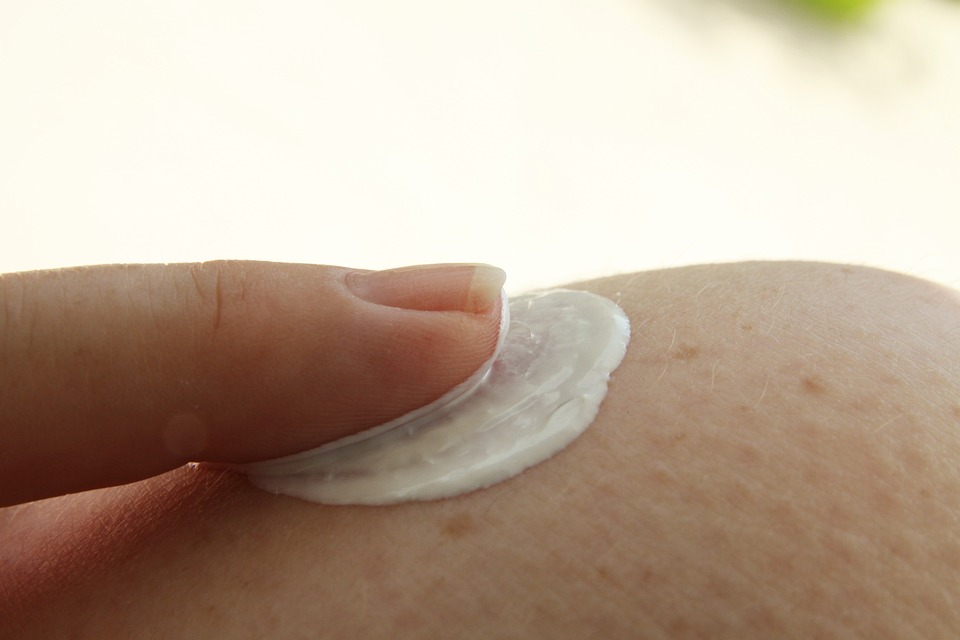This combination product contains two medications: halobetasol and tazarotene. Tazarotene belongs to a group of medications called retinoids. Halobetasol belongs to the family of medications called topical corticosteroids. In combination they are used to treat the signs and symptoms of moderate-to-severe plaque psoriasis.
Tazarotene is believed to help psoriasis by reducing inflammation and keeping skin cell growth down to a normal rate. Halobetasol helps to control redness, itchiness, and irritation of the skin by reducing inflammation.
This medication may be available under multiple brand names and/or in several different forms. Any specific brand name of this medication may not be available in all of the forms or approved for all of the conditions discussed here. As well, some forms of this medication may not be used for all of the conditions discussed here.
Your doctor may have suggested this medication for conditions other than those listed in these drug information articles. If you have not discussed this with your doctor or are not sure why you are taking this medication, speak to your doctor.
Do not stop taking this medication without consulting your doctor. Do not give this medication to anyone else, even if they have the same symptoms as you do. It can be harmful for people to take this medication if their doctor has not prescribed it.
What Is Duobrii Used For?
The Food and Drug Administration (FDA) approved Duobrii to treat plaque psoriasis in adults. With plaque psoriasis, a rapid overproduction of skin cells leads to the formation of plaques—patches of dry, scaly, itchy skin.
Plaques typically occur on the scalp, knees, and elbows but can also appear on the nails, palms of the hands, soles of the feet, or anywhere on the skin. In some people, plaques only occur in a few spots on the body. However, they can cover a large percentage of the body in more severe cases. Depending on skin tone, plaques may look red, purple, brown, gray, or silvery.
Plaque symptoms usually wax and wane over time. Symptoms tend to get worse or “flare” in response to certain triggers (like stress or scratching the skin), then clear up or “go into remission” for a while.
Healthcare providers may suggest several strategies for managing this condition, including avoiding triggers and using topical treatments, such as Duobrii. Duobrii is typically prescribed once daily during flares only or as directed by your healthcare provider.
What Form(s) Does This Medication Come In?
Each gram of white-to-off-white lotion contains 0.1 mg of (0.01%) halobetasol propionate and 0.45 mg (0.045%) of tazarotene. Nonmedicinal ingredients: carbomer copolymer Type B, carbomer homopolymer Type A, diethyl sebacate, edetate disodium dihydrate, light mineral oil, methylparaben, propylparaben, purified water, sodium hydroxide, sorbitan monooleate, and sorbitol solution 70%.
How to Use Duobrii
The recommended dose of this medication is one application to the affected areas once a day. A thin layer of lotion should be applied only to the affected areas and gently rubbed in. The skin should be dry before applying the medication. Apply moisturizers as often as necessary after applying the lotion.
Only apply this medication to areas of skin affected by psoriasis plaques. Avoid applying the lotion to the face, scalp, underarms, or the areas between fingers and toes. If this medication comes in contact with your eyes, flush your eyes well with cold water.
Wash your hands with soap and water after applying the lotion, unless you are treating psoriasis on your hands. Do not cover the treatment areas with dressings or bandages. Do not apply to skin that is broken or severely inflamed. Once your skin improves, stop using this medication. You may then use it on and off as necessary.
This medication may cause increased sensitivity of the skin to sunlight. Sunscreen (minimum SPF 30) and protective clothing should be used when the skin is exposed to sunlight. Your skin may also become more sensitive to wind and very hot or cold weather.
Many things can affect the dose of medication that a person needs, such as body weight, other medical conditions, and other medications. If your doctor has recommended a dose different from the ones listed here, do not change the way that you are taking the medication without consulting your doctor.
It is important to use this medication exactly as prescribed by your doctor. If you miss a dose, take it as soon as possible and continue with your regular schedule. If it is almost time for your next dose, skip the missed dose and continue with your regular dosing schedule. Do not take a double dose to make up for a missed one. If you are not sure what to do after missing a dose, contact your doctor or pharmacist for advice.
Store this medication at room temperature, protect it from light and moisture, and keep it out of the reach of children. Do not dispose of medications in wastewater (e.g. down the sink or in the toilet) or in household garbage. Ask your pharmacist how to dispose of medications that are no longer needed or have expired.
Precautions Or Warnings For This Medication
Before you begin using a medication, be sure to inform your doctor of any medical conditions or allergies you may have, any medications you are taking, whether you are pregnant or breast-feeding, and any other significant facts about your health. These factors may affect how you should use this medication.
Absorption: Absorption of the medication into the bloodstream may lead to adrenal suppression (reduction of the body’s reaction to stressful situations) and side effects, especially if the lotion is used over large areas or for an extended period of time. Occasionally, symptoms of steroid withdrawal may develop when the medication is stopped after prolonged use.
Circulation problems: Topical corticosteroids should be used with caution by people with skin diseases associated with impaired circulation.
Eczema: Retinoids can cause severe irritation of eczema. If you have eczema, your doctor will monitor your condition while you are using halobetasol-tazarotene.
Exposure to sunlight: This medication can make the skin more sensitive to sunlight. This may be made worse if you are taking other medications that cause sensitivity to sunlight (e.g., tetracyclines, quinolone antibiotics, “sulfa” antibiotics). Make sure you use sunscreen (minimum SPF 30) and protective clothing when exposed to sunlight. If you have a sunburn, do not use halobetasol-tazarotene until you have fully recovered.
Infection: Topical corticosteroids may increase the risk of developing a skin infection. Contact your doctor if you notice any increased redness, swelling, heat or pain around the area where the medication is applied, as these are possible signs of infection.
Skin irritation: Halobetasol – tazarotene may cause skin irritation. If this happens you may need to use this mediation less frequently. If local irritation or sensitization develops, call your doctor.
Vision: This medication may increase the risk of developing glaucoma or cataracts. If you have glaucoma, it may make symptoms of glaucoma worse. Report any changes in vision to your doctor as soon as possible.
Pregnancy: Pregnant women should not use halobetasol-tazarotene. Women who may become pregnant should use an effective method of birth control while using this medication.
It is recommended that women who may become pregnant start using halobetasol-tazarotene only after they have confirmed that there is no pregnancy. If you become pregnant while taking this medication, contact your doctor immediately.
Breast-feeding: It is not known if tazarotene or halobetasol pass into breast milk. If you are breast-feeding and are taking this medication, it may affect your baby. Talk to your doctor about whether you should continue breast-feeding.
Children: The safety and effectiveness of using this medication have not been established for children.
Seniors: The safety and effectiveness of using this medication have not been established for people older than 65 years of age. Seniors tend to have fragile skin and other diseases that make them more likely to experience side effects of this medication.
What Are the Side Effects of Duobrii?
This is not a complete list of side effects and others may occur. A healthcare provider can advise you on side effects. If you experience other effects, contact your healthcare provider. You may report side effects to the FDA at fda.gov/medwatch or 800-FDA-1088.
Common Side Effects
Overall, clinical trial results did not report many common side effects with Duobrii use. The most frequent side effect was skin irritation, occurring in 7% of people.
Other side effects may include:
- Skin itching or redness
- Burning, stinging, or pain at application sites
- Folliculitis (inflamed hair follicles)
- Skin thinning
- Rash
- Peeling
- Increased sensitivity to sunlight
These side effects are usually temporary and mild. Talk to your healthcare provider if these side effects become bothersome. They may advise you to stop using Duobrii or use it less frequently until these symptoms subside.
Severe Side Effects
Rarely serious side effects can occur while using Duobrii. If you notice the symptoms described below, do not wait to see if they go away. Tell your healthcare provider right away, or seek emergency medical care if your symptoms feel life-threatening.
Serious side effects and their symptoms can include the following:
- Hyperglycemia (high blood sugar): Symptoms include excessive thirst, increased hunger, frequent urination, blurry vision, and fatigue.
- Adrenal gland problems, such as Cushing’s syndrome (a disorder that occurs when your adrenal glands produce too much cortisol): Symptoms can include anxiety, mood changes, high blood pressure, hyperglycemia, weight gain, and rounded face
- Vision problems such as cataracts and glaucoma, which can include blurred vision or other changes in your sight
- Allergic reaction
READ MORE: 17 Best Foods For Healthy Skin
What Other Medications Interact With Duobrii?
Taking certain medications or using certain topical products while using Duobrii lotion may cause interactions. These interactions can increase the risk of side effects.
Before using Duobrii, tell your healthcare provider about your current medications, skincare products, vitamins, and herbal supplements. They can advise you on how to manage these interactions if possible.
Using Duobrii with medications that cause photosensitivity (sensitivity to ultraviolet rays and light) can further increase sensitivity to sunlight. A few examples include:
- Several antibiotics, such as doxycycline, ciprofloxacin, and “sulfa” drugs (sulfonamides) like sulfamethoxazole
- Nonsteroidal anti-inflammatory drugs (NSAIDs) like Advil or Motrin (ibuprofen) and Naprosyn or Aleve (naproxen)
- Pacerone (amiodarone), a heart medication
Duobrii can also interact with drying topicals (medications in skincare products that can make your skin too dry). Some examples include:
- Benzoyl peroxide
- Salicylic acid
- Witch hazel
What Medications Are Similar?
Duobrii lotion contains a combination of two active drug ingredients: halobetasol propionate, a corticosteroid, and tazarotene, a retinoid. These ingredients in Duobrii are also available as two different topical medications.
Additionally, other topical medications are available to treat plaque psoriasis. Some, like Duobrii, contain a combination of ingredients. Others just have one ingredient.
Below is a list of drugs that may be prescribed instead of Duobrii to treat plaque psoriasis. It is not a list of drugs recommended to take with Duobrii. You should not use these medications together. Ask your pharmacist or healthcare practitioner if you have questions about which treatment options might be suitable for you, including:
- Enstilar (calcipotriene and betamethasone dipropionate) foam
- Taclonex (calcipotriene and betamethasone dipropionate) ointment
- Wynzora (calcipotriene and betamethasone dipropionate) cream
- Tazorac (tazarotene) cream or gel
- Ultravate (halobetasol propionate) lotion
- Bryhali (halobetasol propionate) lotion
How Can I Stay Healthy While Using Duobrii?
Living with plaque psoriasis can be challenging at times. When the symptoms of psoriasis flare-up, you may feel hesitant to go out in public or wear short-sleeved shirts. Fortunately, effective treatments are available to help you find some relief.
A dermatologist or other healthcare provider can help you find the right treatment plan for your plaque psoriasis. A complete treatment plan for psoriasis involves multiple strategies, including skin care routines, avoiding triggers like stress, light therapy, and medications.
When used as prescribed for plaque psoriasis, Duobrii lotion can significantly improve the appearance of your skin. It may help your skin to become clear and stay clear for up to three months. Of course, individual results can vary, and moderate to severe cases of plaque psoriasis may require additional types of treatment.









